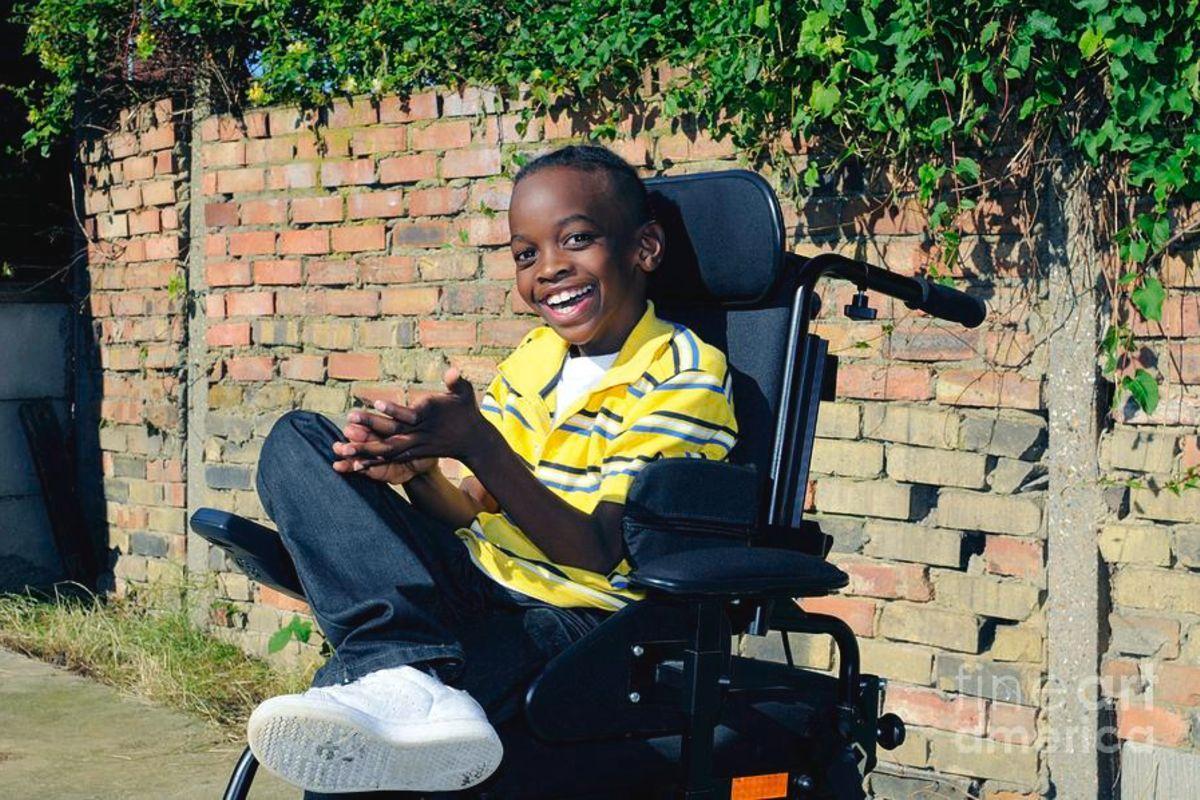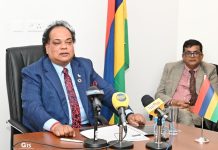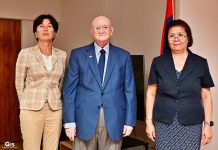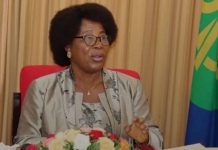Africa-Press – Mauritius. Cerebral palsy (CP) is a group of disorders that affect a person’s ability to move and maintain balance and posture. Cerebral means having to do with the brain. Palsy means weakness or problems with using the muscles.
According to Dr Nandini Gokulchandran, a consultant neurosurgeon at NeuroGen Brain and Spine Institute India, when one has cerebral palsy, it means that the cerebral motor cortex (a part of brain) is unable to control muscle action due to damage caused during or right after birth.
Globally, the prevalence of Cerebral Palsy is estimated at four babies per 1,000 live births or per 1,000 children. It is more common among boys than girls but the reasons for this disparity are uncertain. Depending on which area of the brain is affected, there are four types of CP:
Spastic CP:
Here, the affected individuals have increased muscle tone. The muscles are stiff and as a result, their movements can be awkward.
Dyskinetic CP:
Children with dyskinetic CP have trouble controlling muscle movement. They have variable movement that is involuntary (outside of their control).
Ataxic CP:Here, one has problems with balance and coordination. They have difficulty with quick movement and movements that need a lot of control such as writing.
Mixed CP:
Affected individuals have symptoms of more than one type of CP. The most common type of mixed CP is spastic-dyskinetic CP.
What happens?
Dr Sabrina Kitaka, a paediatrician at Mulago National Referral Hospital, says children with cerebral palsy are likely to have developmental delays such as not reaching for toys by four months or sitting up by seven months, being unable to crawl, walk, or move their arms and legs.
Their oral motor control (how we use the muscles inside the mouth) is impaired and as a result, they face difficulty performing activities such as sucking, chewing, and swallowing. Their overall motor skills are affected and they experience uncoordinated movements.
“Experts are not certain about the cause for this, but many suspect that a neurological anomaly affecting the brain’s ability to send the right signals to the mouth muscles is behind many oral-motor disorders and speech delays,” Dr Kitaka says.
Risk factors
According to Dr Nandini, the most common risk factor is congenital CP, where there is abnormal development of the brain in a foetus. This may be due to infections or other medical problems during pregnancy, a stroke; either in the womb or after birth, untreated jaundice (a yellowing of the skin and whites of eyes) and genetic disorders.
Premature babies, low birthweight babies and babies born as part of multiple births such as twins and triplets have a higher chance of having CP. Lack of oxygen to the brain related to difficult or delayed labour or injury during birth may also cause cerebral palsy.
Brain damage can also happen after childbirth from lead poisoning, bacterial meningitis, poor blood flow to the brain, being shaken as an infant (shaken baby syndrome) or an injury from an accident.
Signs
Children with cerebral palsy can present with characteristics that are categorised into movement, speech and development. These include stiff muscles and exaggerated reflexes (spasticity), the most common movement disorder, variations in muscle tone, such as being either too stiff or too floppy, stiff muscles with normal reflexes (rigidity) and lack of balance and muscle coordination (ataxia).
Other symptoms include tremors or jerky involuntary movements, slow, writhing movements, preferring one side of the body, such as only reaching with one hand or dragging a leg while crawling and difficulty walking, such as walking on toes, a crouched gait, a scissors-like gait with knees crossing, a wide gait or an asymmetrical gait.
There are also delays in speech development, difficulty speaking, and difficulty with sucking, chewing or eating and excessive drooling or problems with swallowing.
These children will also experience delays in reaching motor skills milestones such as sitting up or crawling, learning and intellectual difficulties as well delayed growth, among others.
Diagnosis
It is not possible to diagnose children with cerebral palsy before they are born. They are mostly diagnosed during their first two years of life but in case of mild symptoms, diagnosis may take four to five years.
“In a newborn, an Apgar test is performed. The test assesses the baby’s skin appearance, heart rate, reflexes, muscle tone and breathing.
Newborns with neurological disorders often have a low Apgar score,” Dr Nandini says, adding that physical examinations among infants and children can be conducted since Cerebral Palsy can be physically diagnosed by paediatricians based on the motor milestones achieved by the child.
Also, brain imaging technologies can reveal damaged and abnormally developed areas of the brain. These include an MRI Scan, cranial ultrasound, Electroencephalography (EEG) and a CT scan.
MRI scans use magnetic fields, radio waves, and computer imaging technology to create detailed pictures of the brain’s tissues. It may reveal visible signs of brain damage.
“A CT scan can visualise a cross-section of images in the brain and reveal an abnormality in the Cerebral Palsy patients. The EEG detects the brain’s electrical activity.
It shows abnormal changes in brain waves in children who have epilepsy which is one of the associated conditions of cerebral palsy,” she says. The cranial ultrasound scan reveals bleeding in the brain or changes in white matter, which is usually damaged in cerebral palsy patients.
Treatment
According to Dr Nandini, cerebral palsy cannot be cured completely but with the advent of medical interventions, the patient’s quality of life can be improved.
A child with cerebral palsy may need different types of treatments depending on the severity of symptoms. Rehabilitation involves different interventions including:
a.Physiotherapy:
This therapy starts as soon as the child is diagnosed. It includes exercise and activities that help in improvement of muscle strength, balance and movement. It helps the child in walking, sitting or using a wheelchair.
b.Occupational therapy:
With this, a child will be able to perform daily activities such as dressing up and using the toilet.
c.Recreational therapy:
This therapy includes participation in art programmes, cultural activities, and sports. It improves a child’s physical and intellectual skills.
d.Speech and language therapy:
Speech therapy helps in improving the clarity of speech, swallowing problems, and teaches new ways to communicate, such as by using sign language or a special communication device.
Medications
Dr Nandini says certain medical treatments such as botox, benzodiazepine, baclofen or other muscle relaxants can relax stiff or overactive muscles and reduce abnormal movements.
They may be taken orally, injected into affected muscles, or infused into the fluid surrounding the spinal cord through a pump implanted near the spinal cord. Antiepileptic medications help with seizures.
Surgery
Surgery is one of the many options available to help children with cerebral palsy improve mobility, posture and ensure healthy growth. However, most doctors recommend physical therapy and medication before surgery.
The surgery can improve movement and alignment in the legs, ankles, feet, hips, wrists and arms. These operations are performed on the muscles, tendons, bones and nerves.
Stem cell therapy
Stem cell therapy involves use of stem cells from various sources such as bone marrow and the umbilical cord blood, which have unique properties of regeneration and repair.
These cells multiply, travel towards the damaged areas and replace the damaged/dead cells in the brain. They stimulate the existing cells to halt the damage and regulate the immune system.
“They form new blood vessels and improve blood and oxygen supply to the damaged areas. All these properties of stem cells collectively contribute to reversing brain damage and lead to functional improvements.
These stem cells result in improved muscle tone, speech, cognition, motor functions, and bladder and bowel control as well as improvement in spasticity,” says Dr Nandini.
Prevention
Most cases of CP cannot be prevented, but in order to reduce the risks of a child developing CP, parents can:
Pre birth:
● Mother should get vaccinated.
● Get appropriate pre-natal care.
● Avoid alcohol, tobacco and drugs, among other intoxicating substances.
After birth:
● Making sure your child is vaccinated for all common infant infections.
● Avoiding any chance of head injury, which may result during travel, a fall or while playing.
For More News And Analysis About Mauritius Follow Africa-Press







